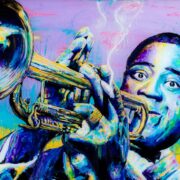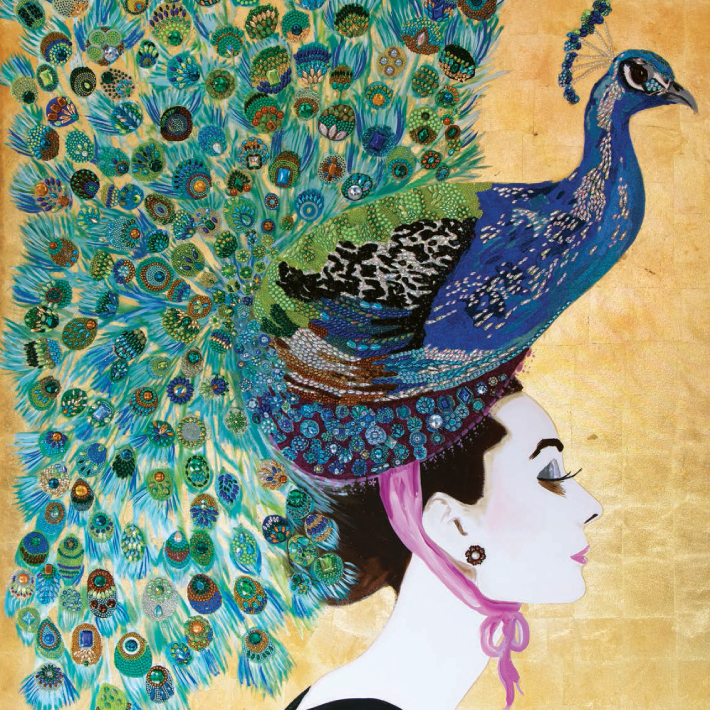The French Market: 200 Years of Welcoming Locals and Tourists

by Mimi Greenwood Knight
THE PANDEMIC YEAR has had more than its share of surreal moments. How many times have you stood in a grocery store surrounded by your fellow masked shoppers and thought, “Is this really happening?” My visit to the French Market in the heart of the Vieux Carré was just one more COVID reality check. Walking the space with Director of Marketing and Development Jeremy Smith, felt like visiting a movie set. There I was in the familiar cavernous pavilion. But something was missing. People. Since the pandemic forced citywide closures in March, the iconic structure has slowly reopened—first on the weekend, then adding Thursday and Friday and, by the time you read this, Monday. I was there on a Wednesday and the silence—in what has always been a bustling marketplace—was eerie.
Since I was a girl, the charm of the French Market has been in the masses of people from backgrounds and traditions I knew little about. I used to love standing in one spot and listening to the languages and accents around me. Long before I traveled abroad or saw much of this country, the French Market allowed me to experience people who were different from me and mine. And I love it! The French Market was—and is—quintessentially New Orleans. But it’s much more than that. It’s people like Awa Thioubou, a Senegalese transplant who’s sold her West African clothing and jewelry in a French Market booth for 25 years.
Known as the Godmother of the Market or Mama Awa, she admits that since vendors were allowed to return in July, she sometimes ends her workday in the red. By the time she pays her booth fee, her employee, and someone to set up and take down her stand, she may or may not make money that day. “This is the only thing I know,” she says. “I’ve always been self-employed. I can’t work for anyone else. We love this market. We love this city. Staying home won’t change anything. We just need to come here and stick it out until the people come back.” Mama Awa was the first merchant to return after Hurricane Katrina. “I told (the other merchants) to come back and one by one they did. God is the only one who can take care of this virus. We just have to keep at it, until he does.”
Then there’s Gamal Sabla. The son of an Arab father and Hispanic mother, Sabla has sold his photographs on metal since 2010. “The city told us out of the blue on March 14th that we had to shut down,” he says. “There are 300 vendors here and some have been here for 30 years. They put their kids through school and college because of the market. It’s hard work. It takes me three hours just to set up each morning. But my parents taught me anything that’s difficult is always good.”
Sabla says what keeps people coming back to the French Market is merchandise they can’t find anywhere else. It’s the ultimate New Orleans experience. Where else can you shop al fresco for clothing, jewelry, art, antiques, homegrown spices and local delicacies surrounded by the sights, sounds and smells of the Quarter. “All these products you see were produced in New Orleans,” says Sabla. “Either that or they come from the vendor’s home countries, like Africa, Asia, the Middle East and Mexico. And because overhead is so low for the merchants, customers pay less here than anywhere else in the city.”
Sabla’s father had a booth at the market before him. “My dad is ethnic Arab with a long beard,” he says. “Even though he speaks six languages and has set foot on 60 percent of the Earth, he had a hard time getting a regular job because of the way he looked. But at the market, he fit right in. He had a booth here for 11 years and made a good living. The market has allowed me to travel and to afford my home and lifestyle. It’s hard work but the hard work pays.”
Without vendors like Sabla and Thioubou, Smith says this place is just an empty shell. “The French Market has always been the heartbeat of the Quarter. But they are the culture bearers. They’re the ones who make the market what it is. Over 200 of them live in New Orleans and they’re here in the heat and the cold and rain, even in tropical storms.” With convention and tourism on hold, for the foreseeable future, the past few months have seen New Orleanians finding their way back to the French Market, a place where they might have only gone when they had visitors in town. Now they’re playing tourist themselves.
The market stalls have been rearranged to allow six feet between vendors, and masks are mandatory for everyone. Since many of the bars and restaurants were already open-air, it’s become a great place to grab a bite and listen to live local music while still feeling safe. And the real cachet is you can do all that only feet from the spot where John James Audubon purchased birds and animals to serve as models for his paintings, the spot where Civil War soldiers bartered their rations for fresh fruits and vegetables, where Mark Twain smoked cigars and drank brandy with his fellow riverboat pilots, and where throughout the 1700s and 1800s, French, Spanish, English, Celtic, Portuguese, Dutch, Italian, African, and Native American merchants stood shoulder to shoulder hawking their wares.
The French Market is the oldest, continually operating open-air market in the country and it’s seen many incarnations. If these walls could talk. And it’s all still there. The unmistakable aroma of café au lait and beignets from Café du Monde, fresh fruits, vegetables, seafood and specialty foods, the quirky flea market finds, unique boutique shopping, authentic local cooking, cocktails, and live jazz music. “The crowd has historically been 60 percent tourists and 40 percent locals,” says Smith. “But the main tourists we’re seeing now are from around Louisiana and our neighboring states. And we’re thrilled to see so many locals enjoying their market. We’ve always been New Orleans to the world. Now New Orleanians themselves can come enjoy their own music, suck down some fresh-shucked oysters, have a muffuletta, some fresh roasted corn and a snowball, all within two blocks.”
Over its 200-year history, the market has twice been destroyed by fire, twice by hurricane and, at the turn of the last century, had to contend with the ravages of the yellow fever epidemic. No one could have foreseen this new challenge. But this too shall pass. The crowds will be back. And in the meantime, locals can enjoy having the market to themselves, just a little bit longer.







